Page 4 of 12
Hot Rolling Mill / Screw downs: Replacing of old resolver technology
For precise speed control in rolling mills the main drives of the roll stands and the coilers need to be equipped with an encoder. In addition, it is often necessary to provide increased protection for personnel during special operating modes, such as: For this application Johannes Hübner Giessen has been working with Motor OEMs for many decades to provide complete solution ie. Electrical and mechanical components. Home Case Studies Hot Rolling Mill / Screw downs: Replacing of old resolver technology Hot Rolling Mill / Screw downs: Replacing of old resolver technology Home Case Studies Pilger mill in tube rolling mills – hot and cold pipe detection Pilger mill in tube rolling mills – hot and cold pipe detection Assembly of hollow shaft absolute encoder ASSH 60 K-16 / 50P (SSI interface) Improved final quality of the rolled material due to increased thickness accuracy Direct assembly to the screw down spindle Before: The old resolver transducer Challenges The customer needed to replace the old resolver technology to improve the thickness control precision and thereby, the material quality. For this purpose they attempted a solution using a linear transducer, which did not give satisfactory results due to its mechanical weakness. Finally, they came to the conclusion to use a high resolution absolute encoder suitable for heavy duty applications. Solution Due to the required robustness, a hollow shaft absolute encoder model ASSH 60 K-16 / 50P with corresponding torque bracket was chosen. The SSI interface with a resolution of 16 bit provides highly accurate signals for the thickness control. At the customer‘s request, the Hübner Giessen engineering department helped in the design of the mounting materials, which were produced by themself. After: Hollow shaft absolute encoder type ASSH 60 K-16 / 50Pwith torque bracket (directly mounted) Products and Accessories Main mill motor encoder Tether Adapter Shaft Heavy duty programmable overspeed switch Speed feedback for main drives Case Study Number TP3 Challenge The increasing flexibility of production lines requires a high adaptability of sensors. Continually changing object geometries, different temperatures and very high radiation or surrounding temperatures are no rarity. In a pilger mill those rough conditions can be found, among others in the production of seemless steel pipes. The raw steel blocks, each weighing a few tons are heated up first in a round oven at a temperature of 1300 °C. After descaling of the surface, the steel block is prepunched in a hole press with a strength from a converted 2000 t. In the next sloping rolling mill the growing pipe rotates between two rollers that are positioned at an angle to each other. The punching is widened to the size of the mandrel diameter. Previous solution / Competitor product N/A Solution The sensor that was installed at this application is the HMD OKA 2038.38 G with tube OL 19. The signal of the infrared sensors controls the movement of centering device and abutment. The point of view is restricted by the tube and prevents disturbances by steam in the cooling phase. An optimum adaptation to the operating conditions is given due to the adjustable response temperature. The HMD with self-learning response temperature (Auto-Teach function) is suited to continually changing conditions. The compact sensor with a stainless steel housing can withstand surrounding temperatures of up to 75° C. The use of a cooling jacket raises this up to 200° C. Alternatively sensors with fibre optic cables are available which permit an application at ambient temperatures up to 600° C without cooling. Customer Benefits Maintenance-free High temperature stability Recognition of hot objects at big distances Self adjustment with Auto-Teach or step switch for the response temperature Product Part number OKA 2038.38 G Brand Proxitron Accessories Piros swivel stand HM2 Tube OL 19 Pilot light unit (for alignment) DAK 308 + OL 26 Different cable lengths (e.g. 15 m) Customer Testimonial compared to previous solution or competition Case Studies Other Solutions in Hot Rolling Mills – Roughing Mills View All

Tags: Hot Rolling Mills
November 19, 2021
Conveyor bridge/Hoist: Higher accuracy and less comissioning time by retrofitting mechanical to electronic position switches
Electronic position switch ERC 40 enclosed in robust housing for use in extreme ambient conditions. The new solution offers customers the following benefits: Higher switching accuracy when approaching end position limits, Less downtimes, User-friendly calibration via preset input, Save and import parameter data sets, Time-saving safety check (switch test function), Additional real-time position data (4 – 20 mA output), Reduced type variety and costs for backup devices, Integrated status monitoring (temperature, speed, voltage, system limits and so on) with active signal output for time-saving identification in the event of a fault condition Home Case Studies Conveyor bridge/Hoist: Higher accuracy and less comissioning time by retrofitting mechanical to electronic position switches strip quality Conveyor bridge/Hoist: Higher accuracy and less comissioning time by retrofitting mechanical to electronic position switches Home Case Studies Pilger mill in tube rolling mills – hot and cold pipe detection Pilger mill in tube rolling mills – hot and cold pipe detection Less setup and maintenance time Direct mounting without distribution gear Higher switching accuracy Additional real-time position data Before: Mechanical cam limit switches limit movement and end positions on hoisting and slewing gear. Challenges Replacement of existing mechanical cam limit switches limiting the end position of movable plant components on a large conveyor bridge in open-pit mining. This is intended to eliminate the following problems: Inaccurate switching points due to backlash and hysteresis High maintenance, installation and start-up times with standstill and disruption to the value creation chain Mandatory inspections require a lot of time and effort High costs for backup devices and maintenance Lack of approval for safety functions in line with current standards and directives After: Electronic position switch ERC 40 replaces mechanical cam limit switches. The Hübner Giessen solution Electronic position switch ERC 40 enclosed in robust housing for use in extreme ambient conditions. The new solution offers customers the following benefits: Higher switching accuracy when approaching end position limits Less downtimes User-friendly calibration via preset input Save and import parameter data sets Time-saving safety check (switch test function) Additional real-time position data (4 – 20 mA output) Reduced type variety and costs for backup devices Integrated status monitoring (temperature, speed, voltage, system limits and so on) with active signal output for time-saving identification in the event of a fault condition Products and Accessories Electronic position switch Heavy duty absolute encoder Heavy duty programmable overspeed switch Case Study Number TP3 Challenge The increasing flexibility of production lines requires a high adaptability of sensors. Continually changing object geometries, different temperatures and very high radiation or surrounding temperatures are no rarity. In a pilger mill those rough conditions can be found, among others in the production of seemless steel pipes. The raw steel blocks, each weighing a few tons are heated up first in a round oven at a temperature of 1300 °C. After descaling of the surface, the steel block is prepunched in a hole press with a strength from a converted 2000 t. In the next sloping rolling mill the growing pipe rotates between two rollers that are positioned at an angle to each other. The punching is widened to the size of the mandrel diameter. Previous solution / Competitor product N/A Solution The sensor that was installed at this application is the HMD OKA 2038.38 G with tube OL 19. The signal of the infrared sensors controls the movement of centering device and abutment. The point of view is restricted by the tube and prevents disturbances by steam in the cooling phase. An optimum adaptation to the operating conditions is given due to the adjustable response temperature. The HMD with self-learning response temperature (Auto-Teach function) is suited to continually changing conditions. The compact sensor with a stainless steel housing can withstand surrounding temperatures of up to 75° C. The use of a cooling jacket raises this up to 200° C. Alternatively sensors with fibre optic cables are available which permit an application at ambient temperatures up to 600° C without cooling. Customer Benefits Maintenance-free High temperature stability Recognition of hot objects at big distances Self adjustment with Auto-Teach or step switch for the response temperature Product Part number OKA 2038.38 G Brand Proxitron Accessories Piros swivel stand HM2 Tube OL 19 Pilot light unit (for alignment) DAK 308 + OL 26 Different cable lengths (e.g. 15 m) Customer Testimonial compared to previous solution or competition Case Studies Other Solutions in Mining & Material Handling Sample case study title lorem ipsum here Short description of the problem solved, maybe include the client name. READ MORE Sample case study title lorem ipsum here Short description of the problem solved, maybe include the client name. READ MORE Sample case study title lorem ipsum here Short description of the problem solved, maybe include the client name. READ MORE View All

Tags: Crane, Large Machinery, material handling
October 26, 2021
Excavator/Hoist: U-ONE-SAFETY-Compact implements safety functions in open cast mining even without a safety PLC
The universal encoder system U-ONE®-SAFETY-Compact consists of a basic unit and directly attached switch or bus modules. All functions are integrated in a robust housing designed to meet the specific demands of heavy industry. Safety switching signals are provided according to position and speed based on a 13 / 15 bit resolution (max. 32768 rotations). It is possible to combine diverse bus interfaces as well as a 4 – 20 mA analog output or an incremental output according to application requirements. As a consequence, it is possible to replace several individual devices with a single compact device. The system-wide two channel architecture facilitates the implementation of safety functions up to Category 3 and Performance Level (PL) d as well as SIL 2. Home Case Studies Excavator/Hoist: U-ONE-SAFETY-Compact implements safety functions in open cast mining even without a safety PLC Excavator/Hoist: U-ONE-SAFETY-Compact implements safety functions in open cast mining even without a safety PLC Home Case Studies Pilger mill in tube rolling mills – hot and cold pipe detection Pilger mill in tube rolling mills – hot and cold pipe detection Replaces several individual devices with a single, compact system incl. additional functions Safe position and end position monitoring Easy to configure, no need to modify with the control software Certified safety ensures uncomplicated acceptance test Before: Mechanical spindle limit switches were driven by gearwheel and used for monitoring and switching of end positions. Challenges Absolute encoders and mechanical limit switches (levers and / or spindle limit switches) characterize state-of-the-art solutions for position detection and limiting the end position of moving system components in relation to one another on large machinery in open-cast mining applications. To ensure the safety of personnel and safeguard machinery it is essential that limit switches are reliably actuated when end positions are reached. Consequently, highly reliable monitoring technology is necessary to comply with the corresponding safety requirements – in particular when implementing modernization or automation measures. To meet the required performance level, two-channel architectures or diverse redundant systems are needed. After: The direct driven universal encoder system U-ONE-SAFETY-Compact allows high precise and safety certified monitoring and switching of end positions. Solution The universal encoder system U-ONE®-SAFETY-Compact consists of a basic unit and directly attached switch or bus modules. All functions are integrated in a robust housing designed to meet the specific demands of heavy industry. Safety switching signals are provided according to position and speed based on a 13 / 15 bit resolution (max. 32768 rotations). It is possible to combine diverse bus interfaces as well as a 4 – 20 mA analog output or an incremental output according to application requirements. As a consequence, it is possible to replace several individual devices with a single compact device. The system-wide two channel architecture facilitates the implementation of safety functions up to Category 3 and Performance Level (PL) d as well as SIL 2. Products and Accessories Universal Encoder Heavy duty absolute encoder Heavy duty programmable overspeed switch Case Study Number TP3 Challenge The increasing flexibility of production lines requires a high adaptability of sensors. Continually changing object geometries, different temperatures and very high radiation or surrounding temperatures are no rarity. In a pilger mill those rough conditions can be found, among others in the production of seemless steel pipes. The raw steel blocks, each weighing a few tons are heated up first in a round oven at a temperature of 1300 °C. After descaling of the surface, the steel block is prepunched in a hole press with a strength from a converted 2000 t. In the next sloping rolling mill the growing pipe rotates between two rollers that are positioned at an angle to each other. The punching is widened to the size of the mandrel diameter. Previous solution / Competitor product N/A Solution The sensor that was installed at this application is the HMD OKA 2038.38 G with tube OL 19. The signal of the infrared sensors controls the movement of centering device and abutment. The point of view is restricted by the tube and prevents disturbances by steam in the cooling phase. An optimum adaptation to the operating conditions is given due to the adjustable response temperature. The HMD with self-learning response temperature (Auto-Teach function) is suited to continually changing conditions. The compact sensor with a stainless steel housing can withstand surrounding temperatures of up to 75° C. The use of a cooling jacket raises this up to 200° C. Alternatively sensors with fibre optic cables are available which permit an application at ambient temperatures up to 600° C without cooling. Customer Benefits Maintenance-free High temperature stability Recognition of hot objects at big distances Self adjustment with Auto-Teach or step switch for the response temperature Product Part number OKA 2038.38 G Brand Proxitron Accessories Piros swivel stand HM2 Tube OL 19 Pilot light unit (for alignment) DAK 308 + OL 26 Different cable lengths (e.g. 15 m) Customer Testimonial compared to previous solution or competition Case Studies Other Solutions in Mining & Material Handling Sample case study title lorem ipsum here Short description of the problem solved, maybe include the client name. READ MORE Sample case study title lorem ipsum here Short description of the problem solved, maybe include the client name. READ MORE Sample case study title lorem ipsum here Short description of the problem solved, maybe include the client name. READ MORE View All

Tags: Crane, Large Machinery, material handling
Converter /Tilting angle: Exchange solution for tilting angle monitoring
Home Case Studies Converter /Tilting angle: Exchange solution for tilting angle monitoring Compact IR thermal imaging camera was installed to provide a temperature map of the bottom shell. The cameral scans the full bottom of the shell giving options to define multiple areas /ROI to get 4-20mA output. Software automatically finds hot spots enable timely preventative maintenance. Converter /Tilting angle: Exchange solution for tilting angle monitoring Home Case Studies Pilger mill in tube rolling mills – hot and cold pipe detection Pilger mill in tube rolling mills – hot and cold pipe detection Direct mounting / elimination distribution gear Higher accuracy Easy configuration of switching points Fast commissioning and restart after preset Before: Mechanical cam limit switch and absolute encoder mounted by using an additional distribution gear Challenges In steel making plants tilting angles of converters are measured by absolute encoders and monitored by mechanical cam limit switches. The sensors are normally mounted by using an additional distribution gear, which causes mechanical play and inaccuracy. Furthermore, the mechanical cam limit switches are difficult to preset and not precise enough. After: Electronic position switches and absolute encoder in one unit directly mounted without distribution gear Solution The universal encoder system U-ONE-(SAFETY-)Compact provides the same outputs as the old solution, but in just one compact and robust unit:• Absolute encoder• Electronic position switches The unit can be mounted directly to the application shaft without using any distribution gear. For this Hübner Giessen provides special torsion resistant double-joint couplings. The switching points are easy to configure and the system can be restarted fastly after preset. Optionally available with safety certification SIL 2/PL d. Products and Accessories Universal Encoder Case Study Number TP3 Challenge The increasing flexibility of production lines requires a high adaptability of sensors. Continually changing object geometries, different temperatures and very high radiation or surrounding temperatures are no rarity. In a pilger mill those rough conditions can be found, among others in the production of seemless steel pipes. The raw steel blocks, each weighing a few tons are heated up first in a round oven at a temperature of 1300 °C. After descaling of the surface, the steel block is prepunched in a hole press with a strength from a converted 2000 t. In the next sloping rolling mill the growing pipe rotates between two rollers that are positioned at an angle to each other. The punching is widened to the size of the mandrel diameter. Previous solution / Competitor product N/A Solution The sensor that was installed at this application is the HMD OKA 2038.38 G with tube OL 19. The signal of the infrared sensors controls the movement of centering device and abutment. The point of view is restricted by the tube and prevents disturbances by steam in the cooling phase. An optimum adaptation to the operating conditions is given due to the adjustable response temperature. The HMD with self-learning response temperature (Auto-Teach function) is suited to continually changing conditions. The compact sensor with a stainless steel housing can withstand surrounding temperatures of up to 75° C. The use of a cooling jacket raises this up to 200° C. Alternatively sensors with fibre optic cables are available which permit an application at ambient temperatures up to 600° C without cooling. Customer Benefits Maintenance-free High temperature stability Recognition of hot objects at big distances Self adjustment with Auto-Teach or step switch for the response temperature Product Part number OKA 2038.38 G Brand Proxitron Accessories Piros swivel stand HM2 Tube OL 19 Pilot light unit (for alignment) DAK 308 + OL 26 Different cable lengths (e.g. 15 m) Customer Testimonial compared to previous solution or competition Case Studies Other applications in Steel Making Sample case study title lorem ipsum here Short description of the problem solved, maybe include the client name. READ MORE Sample case study title lorem ipsum here Short description of the problem solved, maybe include the client name. READ MORE Sample case study title lorem ipsum here Short description of the problem solved, maybe include the client name. READ MORE View All
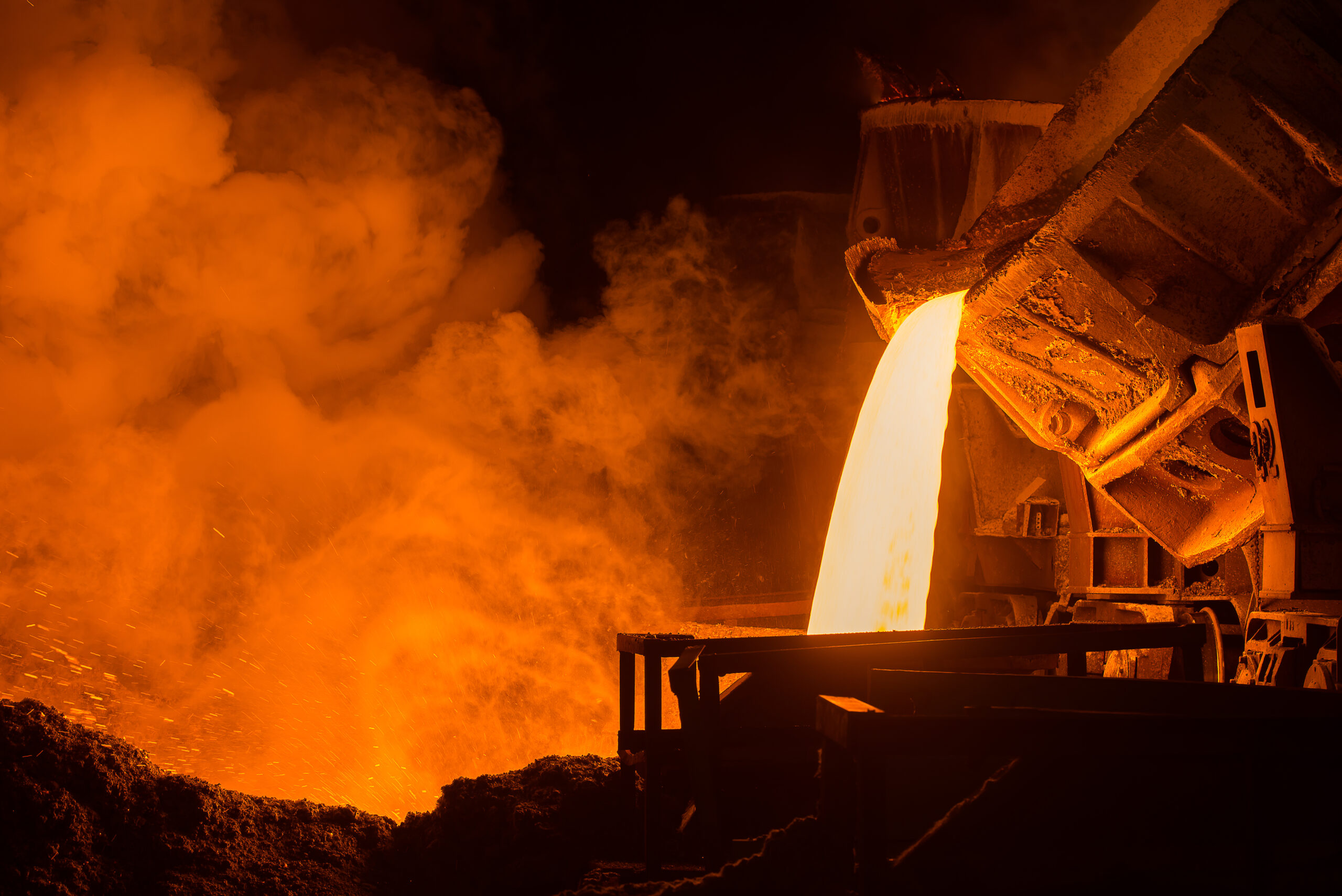
Tags: converter, Steel Making
Converter / Lance position: New solution for positioning of the oxygen lance
Compact IR thermal imaging camera was installed to provide a temperature map of the bottom shell. The cameral scans the full bottom of the shell giving options to define multiple areas /ROI to get 4-20mA output. Software automatically finds hot spots enable timely preventative maintenance. Home Case Studies Converter / Lance position: New solution for positioning of the oxygen lance Converter / Lance position: New solution for positioning of the oxygen lance Home Case Studies Pilger mill in tube rolling mills – hot and cold pipe detection Pilger mill in tube rolling mills – hot and cold pipe detection No need of complex encoder constructions Higher accuracy Easy configuration of switching points Precise and reliable positioning Before: Mechanical cam limit switch and absolute encoder mounted by using an additional distribution gear. Challenges The customer needed a solution to detect the lance position for precise and reliable positioning. The old solution included an absolute encoder for current position values and a mechanical cam limit switch for position range monitoring. The limited positioning accuracy due to mechanical play was caused by the necessary installation of an additional distribution gear. The task was to find a new solution instead of the old one with mechanical cam limit switch and absolute encoder. After: Electronic position switches and absolute encoder in one unit directly mounted without distribution gear. Solution To get the same outputs as before Hübner Giessen provides the universal encoder system U-ONE(-SAFETY)-Compact with both outputs in one unit: • Absolute encoder • Electronic position switches The unit can be mounted directly to the application shaft without using any distribution gear. For this Hübner Giessen provides special double-joint couplings. The switching points are easy to configure and the system can be restarted fastly after preset. Optionally available with safety certification SIL 2 / PL d. Products and Accessories Universal Encoder Case Study Number TP3 Challenge The increasing flexibility of production lines requires a high adaptability of sensors. Continually changing object geometries, different temperatures and very high radiation or surrounding temperatures are no rarity. In a pilger mill those rough conditions can be found, among others in the production of seemless steel pipes. The raw steel blocks, each weighing a few tons are heated up first in a round oven at a temperature of 1300 °C. After descaling of the surface, the steel block is prepunched in a hole press with a strength from a converted 2000 t. In the next sloping rolling mill the growing pipe rotates between two rollers that are positioned at an angle to each other. The punching is widened to the size of the mandrel diameter. Previous solution / Competitor product N/A Solution The sensor that was installed at this application is the HMD OKA 2038.38 G with tube OL 19. The signal of the infrared sensors controls the movement of centering device and abutment. The point of view is restricted by the tube and prevents disturbances by steam in the cooling phase. An optimum adaptation to the operating conditions is given due to the adjustable response temperature. The HMD with self-learning response temperature (Auto-Teach function) is suited to continually changing conditions. The compact sensor with a stainless steel housing can withstand surrounding temperatures of up to 75° C. The use of a cooling jacket raises this up to 200° C. Alternatively sensors with fibre optic cables are available which permit an application at ambient temperatures up to 600° C without cooling. Customer Benefits Maintenance-free High temperature stability Recognition of hot objects at big distances Self adjustment with Auto-Teach or step switch for the response temperature Product Part number OKA 2038.38 G Brand Proxitron Accessories Piros swivel stand HM2 Tube OL 19 Pilot light unit (for alignment) DAK 308 + OL 26 Different cable lengths (e.g. 15 m) Customer Testimonial compared to previous solution or competition Case Studies Other applications in Steel Making Sample case study title lorem ipsum here Short description of the problem solved, maybe include the client name. READ MORE Sample case study title lorem ipsum here Short description of the problem solved, maybe include the client name. READ MORE Sample case study title lorem ipsum here Short description of the problem solved, maybe include the client name. READ MORE View All
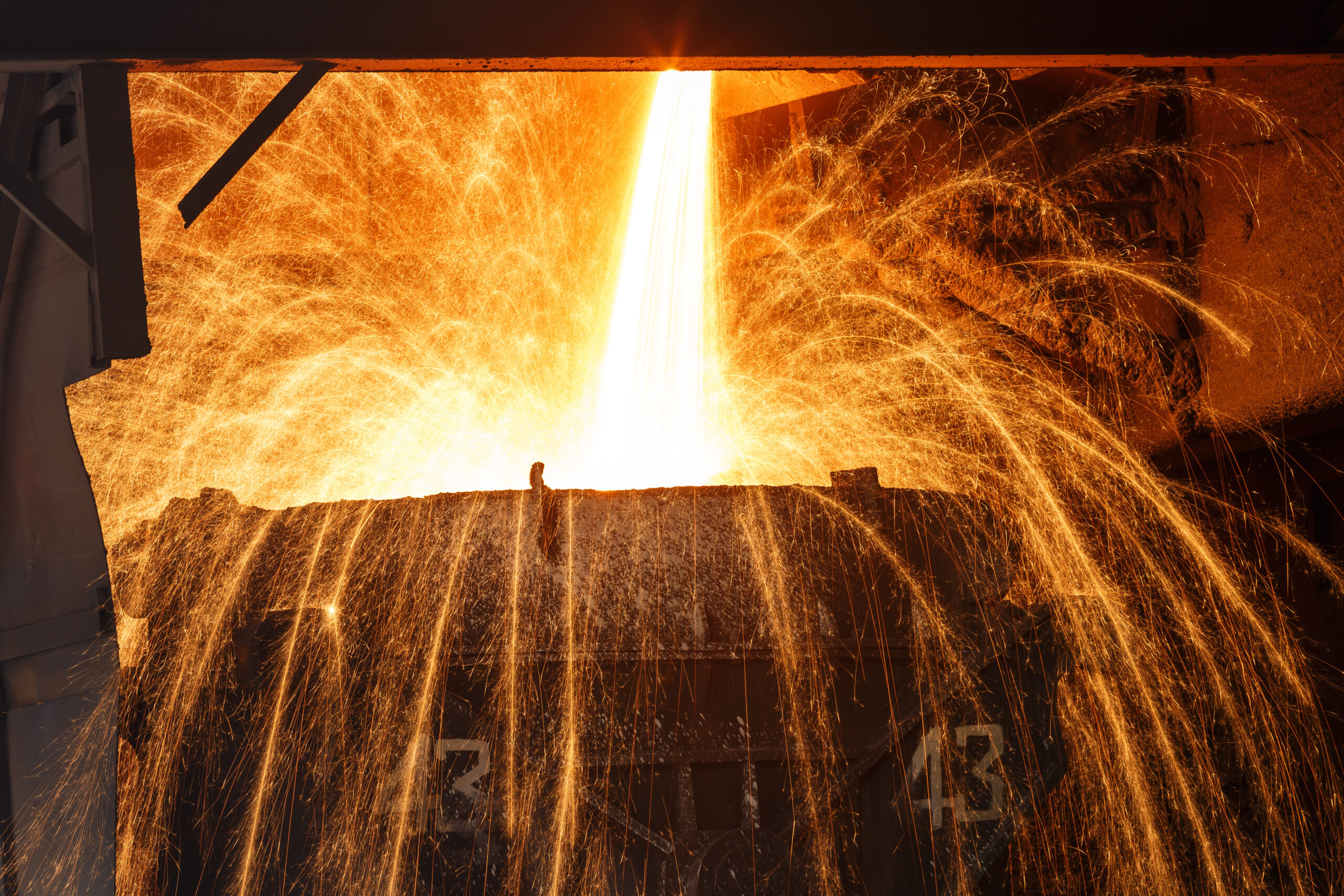
Tags: Steel Making
October 11, 2021
Hoist /Drum: Improved operating reliability and positioning accuracy at the ladle crane
Fundamentally improve the operating reliability and positioning accuracy of the ladle crane hoist used in steel production. Installation of the modular universal encoder system U-ONE, which offers the following special characteristics • Basic unit mounted directly at the hoist drum by using a double joint coupling on a tailor-made base plate construction • Signal transmission via fiber optic cable prevents EMC problems Home Case Studies Hoist /Drum: Improved operating reliability and positioning accuracy at the ladle crane Hoist /Drum: Improved operating reliability and positioning accuracy at the ladle crane Home Case Studies Pilger mill in tube rolling mills – hot and cold pipe detection Pilger mill in tube rolling mills – hot and cold pipe detection Reliable braking when overspeed is detected Precise switching of hoist positions Configure parameters quickly and easily Preset shortens downtimes after rope change Before: Hoist drum with mechanical rotary cam limit switch, but without overspeed detection. Bottom right, the new holding brake. Task Fundamentally improve the operating reliability and positioningaccuracy of the ladle crane hoist used in steel production byimplementing the following measures: Replacement of the existing mechanical cam limit switchwith an electronic position switch that ensures significantlyhigher accuracy Additional implementation of an electronic overspeed switchto realize overspeed detection as well as an emergency break(not included in scope of supply of Hübner Giessen) After: Hoist drum with U-ONE basic unit and holding brake. The photo right shows the U-ONE electronic modules in the switchboard. Solution Installation of the modular universal encoder system U-ONE,which offers the following special characteristics: Basic unit mounted directly at the hoist drum by using adouble joint coupling on a tailor-made base plate construction Signal transmission via fiber optic cable preventsEMC problems The following electronic modules were installed,well-protected in the switchboard: FOC decoder Electronic position switch (ERC) with 6 relay outputs andpreset input to facilitate plant adjustments Electronic overspeed switch (EGS) with 2 relay outputs andintegrated system check function Products and Accessories Universal Encoder Heavy duty absolute encoder Heavy duty programmable overspeed switch Case Study Number TP3 Challenge The increasing flexibility of production lines requires a high adaptability of sensors. Continually changing object geometries, different temperatures and very high radiation or surrounding temperatures are no rarity. In a pilger mill those rough conditions can be found, among others in the production of seemless steel pipes. The raw steel blocks, each weighing a few tons are heated up first in a round oven at a temperature of 1300 °C. After descaling of the surface, the steel block is prepunched in a hole press with a strength from a converted 2000 t. In the next sloping rolling mill the growing pipe rotates between two rollers that are positioned at an angle to each other. The punching is widened to the size of the mandrel diameter. Previous solution / Competitor product N/A Solution The sensor that was installed at this application is the HMD OKA 2038.38 G with tube OL 19. The signal of the infrared sensors controls the movement of centering device and abutment. The point of view is restricted by the tube and prevents disturbances by steam in the cooling phase. An optimum adaptation to the operating conditions is given due to the adjustable response temperature. The HMD with self-learning response temperature (Auto-Teach function) is suited to continually changing conditions. The compact sensor with a stainless steel housing can withstand surrounding temperatures of up to 75° C. The use of a cooling jacket raises this up to 200° C. Alternatively sensors with fibre optic cables are available which permit an application at ambient temperatures up to 600° C without cooling. Customer Benefits Maintenance-free High temperature stability Recognition of hot objects at big distances Self adjustment with Auto-Teach or step switch for the response temperature Product Part number OKA 2038.38 G Brand Proxitron Accessories Piros swivel stand HM2 Tube OL 19 Pilot light unit (for alignment) DAK 308 + OL 26 Different cable lengths (e.g. 15 m) Customer Testimonial compared to previous solution or competition Case Studies Other Solutions in Mining & Material Handling Sample case study title lorem ipsum here Short description of the problem solved, maybe include the client name. READ MORE Sample case study title lorem ipsum here Short description of the problem solved, maybe include the client name. READ MORE Sample case study title lorem ipsum here Short description of the problem solved, maybe include the client name. READ MORE View All
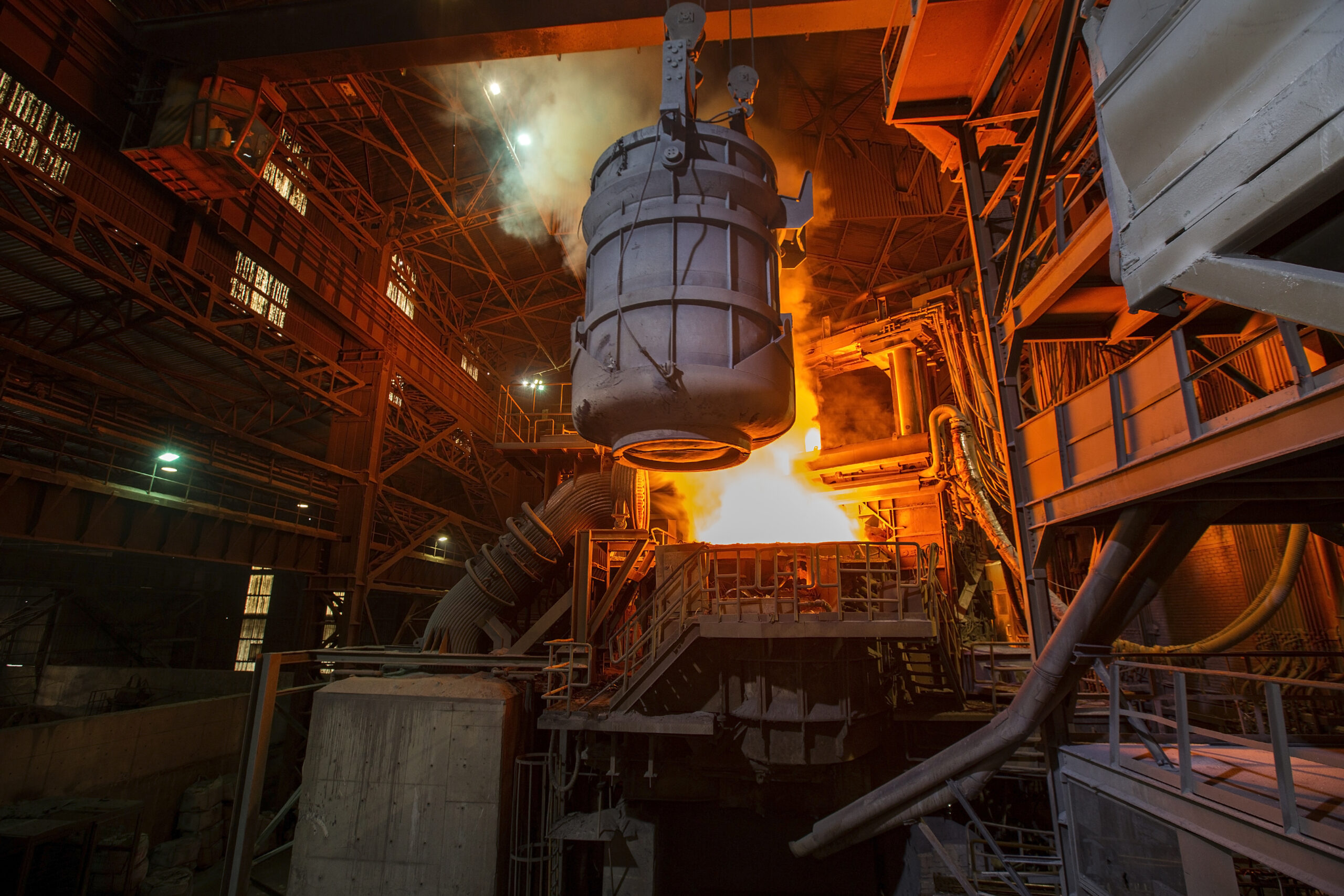
Tags: Crane, material handling
October 8, 2021
Slab Detection in Excessive Steam (HMD)
On the roughing mill exit, there is a lot of steam due to the spray header. The steam obstructs field of view of the traditional scanning type HMDs as result, occasionally the signal flickers for a millisecond. The next generation HMD 4.0 from Proxitron have intelligent software features which allows to set dual thresholds (hysteresis). Home Products Sensor Technology Slab Detection in Excessive Steam (HMD) Slab Detection in Excessive Steam (HMD) Home Case Studies Pilger mill in tube rolling mills – hot and cold pipe detection Pilger mill in tube rolling mills – hot and cold pipe detection HMD under most aggressive environment Flicker free operation due to dual threshold (hysteresis) setting option Adjustable response temperature Withstand ambient 2000C (water-cooling) and 2900C (w/o water cooling) Diagnostic alarm feature Challenges On the roughing mill exit, there is a lot of steam due to the spray header. The steam obstructs field of view of the traditional scanning type HMDs as result, occasionally the signal flickers for a millisecond. Solution The next generation HMD 4.0 from Proxitron have intelligent software features which allows to set dual thresholds (hysteresis). The upper threshold setting say at 6000C and lower threshold setting at 2000C. So when slab at 10000C cross the field of view of the HMD 4.0 detects the slab but due to momentarily presence of steam, slab temperature may appear to be lower than 600C will not cause the signal to flicker. Only if the temperature goes below the lower threshold setting i.e. 200C will HMD shows slab is not present. Products and Accessories Hot Metal Detectors Accessories Case Study Number TP3 Challenge The increasing flexibility of production lines requires a high adaptability of sensors. Continually changing object geometries, different temperatures and very high radiation or surrounding temperatures are no rarity. In a pilger mill those rough conditions can be found, among others in the production of seemless steel pipes. The raw steel blocks, each weighing a few tons are heated up first in a round oven at a temperature of 1300 °C. After descaling of the surface, the steel block is prepunched in a hole press with a strength from a converted 2000 t. In the next sloping rolling mill the growing pipe rotates between two rollers that are positioned at an angle to each other. The punching is widened to the size of the mandrel diameter. Previous solution / Competitor product N/A Solution The sensor that was installed at this application is the HMD OKA 2038.38 G with tube OL 19. The signal of the infrared sensors controls the movement of centering device and abutment. The point of view is restricted by the tube and prevents disturbances by steam in the cooling phase. An optimum adaptation to the operating conditions is given due to the adjustable response temperature. The HMD with self-learning response temperature (Auto-Teach function) is suited to continually changing conditions. The compact sensor with a stainless steel housing can withstand surrounding temperatures of up to 75° C. The use of a cooling jacket raises this up to 200° C. Alternatively sensors with fibre optic cables are available which permit an application at ambient temperatures up to 600° C without cooling. Customer Benefits Maintenance-free High temperature stability Recognition of hot objects at big distances Self adjustment with Auto-Teach or step switch for the response temperature Product Part number OKA 2038.38 G Brand Proxitron Accessories Piros swivel stand HM2 Tube OL 19 Pilot light unit (for alignment) DAK 308 + OL 26 Different cable lengths (e.g. 15 m) Customer Testimonial compared to previous solution or competition Case Studies Other Solutions in Hot Rolling Mills View All
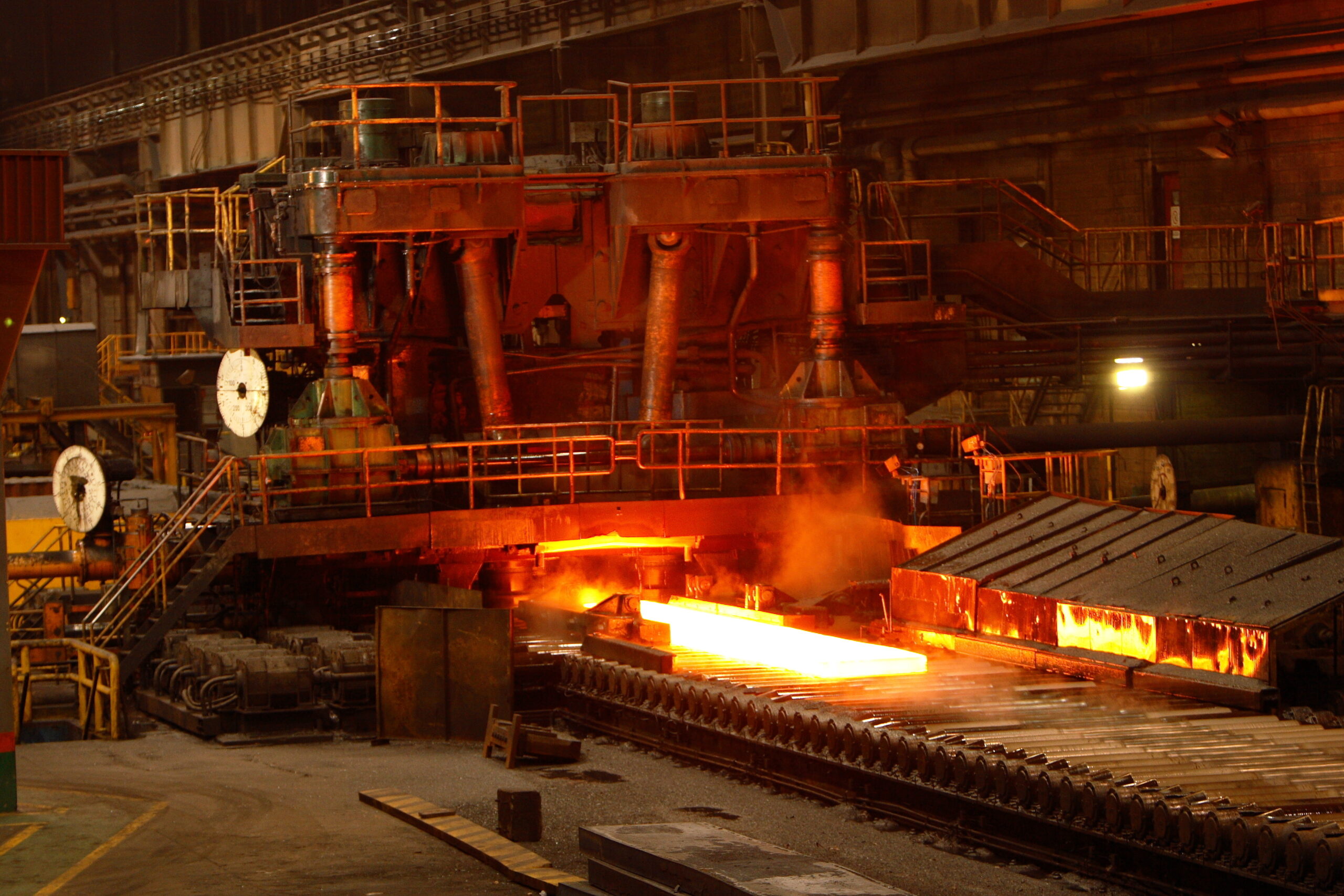
Tags: Slab detection
Precise Looper Position Feedback
Loopers are normally used to control the tension of the metal strip between roll stands. The rotational angle of the looper is measured by a feedback encoder that is exposed to special demands. For this application Johannes Hübner Giessen developed a special looper encoder, which boasts a considerably longer lifetime thanks to especially designed-in features. Home Case Studies Precise looper position feedback Rolling mills /Looper: Special looper encoders withstand the most extreme operating conditions in hot roll stands Home Case Studies Pilger mill in tube rolling mills – hot and cold pipe detection Pilger mill in tube rolling mills – hot and cold pipe detection Special looper encoders withstand the most extreme operating conditions in hot roll stands Subject to high loads from shock, temperature and cooling emulsions Heavy-duty ball bearings with special lubrication Increased lifetime Reduced downtime Loopers in hot rolling mills are working under extremely rough conditions. Challenges Loopers are normally used to control the tension of the metal strip between roll stands. The rotational angle of the looper is measured by a feedback encoder that is exposed to special demands. The setting angle up to only about 45° results in a partial load on the encoder bearings in conjunction with insufficient bearing lubrication. The encoder is subject to high levels of shock and temperature loads as well as oil/cooling emulsions /water at the place of installation. Formerly used standard encoders have not reached the required lifetime. Looper encoder with heavy-duty ball bearings and special lubrication for long lifetime. The Hübner Giessen solution For this application Johannes Hübner Giessen developed a special looper encoder, which boasts a considerably longer lifetime thanks to especially designed-in features. These contain oversized bearings with the dynamic load rating increased by 40% as well as a special radial shaft sealing ring with an additional protective lip. To guarantee the best signal quality the bearings are not primarily designed for high speeds, but rather for high shock loads up to 450 g. The min. degree of protection is IP66/ IP67 with an operating temperature up to 100 °C. Products and Accessories Looper Encoder Heavy duty stainless steel coupling Connector Case Study Number TP3 Challenge The increasing flexibility of production lines requires a high adaptability of sensors. Continually changing object geometries, different temperatures and very high radiation or surrounding temperatures are no rarity. In a pilger mill those rough conditions can be found, among others in the production of seemless steel pipes. The raw steel blocks, each weighing a few tons are heated up first in a round oven at a temperature of 1300 °C. After descaling of the surface, the steel block is prepunched in a hole press with a strength from a converted 2000 t. In the next sloping rolling mill the growing pipe rotates between two rollers that are positioned at an angle to each other. The punching is widened to the size of the mandrel diameter. Previous solution / Competitor product N/A Solution The sensor that was installed at this application is the HMD OKA 2038.38 G with tube OL 19. The signal of the infrared sensors controls the movement of centering device and abutment. The point of view is restricted by the tube and prevents disturbances by steam in the cooling phase. An optimum adaptation to the operating conditions is given due to the adjustable response temperature. The HMD with self-learning response temperature (Auto-Teach function) is suited to continually changing conditions. The compact sensor with a stainless steel housing can withstand surrounding temperatures of up to 75° C. The use of a cooling jacket raises this up to 200° C. Alternatively sensors with fibre optic cables are available which permit an application at ambient temperatures up to 600° C without cooling. Customer Benefits Maintenance-free High temperature stability Recognition of hot objects at big distances Self adjustment with Auto-Teach or step switch for the response temperature Product Part number OKA 2038.38 G Brand Proxitron Accessories Piros swivel stand HM2 Tube OL 19 Pilot light unit (for alignment) DAK 308 + OL 26 Different cable lengths (e.g. 15 m) Customer Testimonial compared to previous solution or competition Case Studies Other Solutions in Hot Rolling Mills – Finishing Mills View All
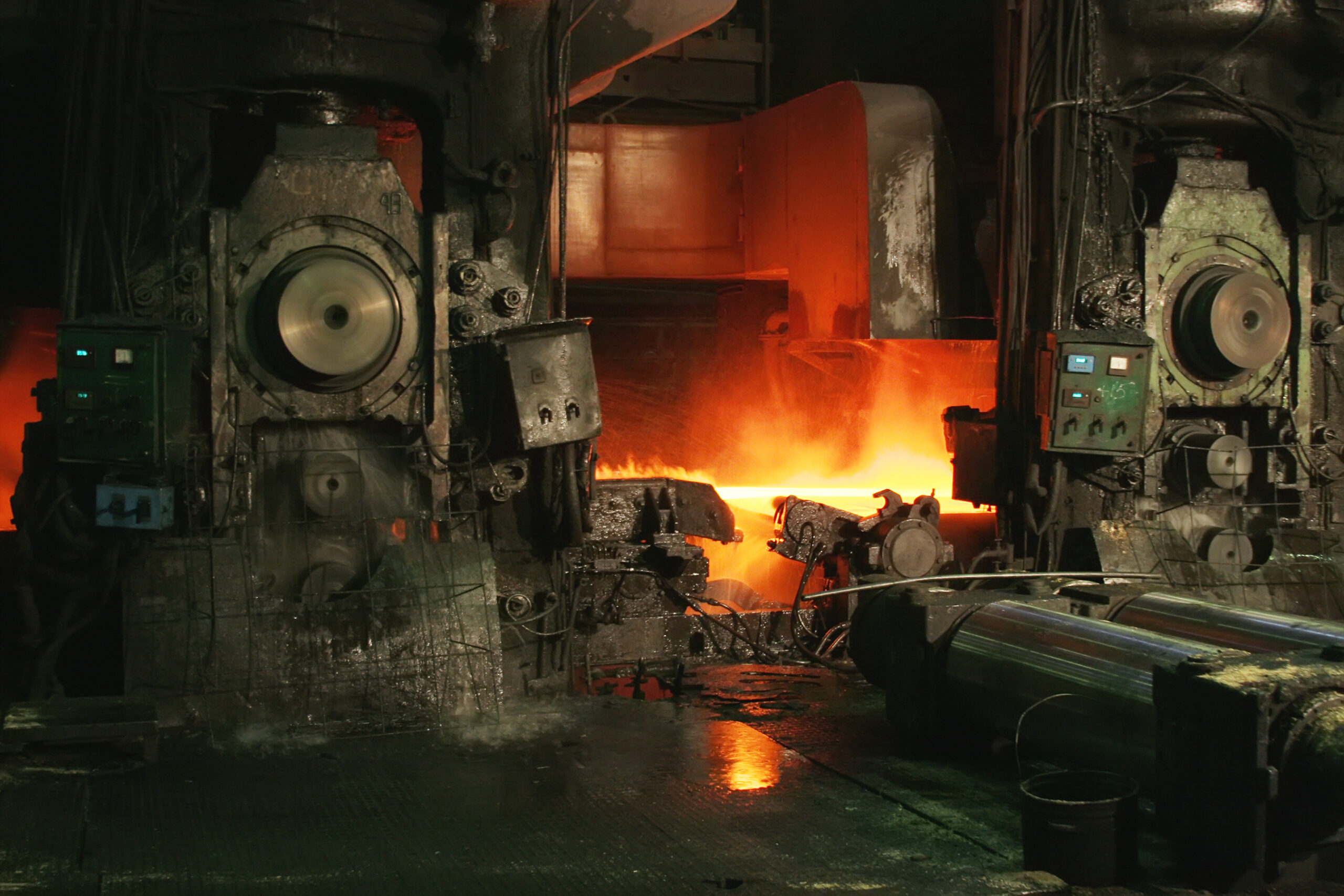
Tags: Hot Rolling Mills
Strip detection after laminar cooling
Due to low temperature of the strip at the laminar table, the response from a standard scanning type HMD was unstable. Proxitron light barrier was installed at the down coiler. It provided higher functional reserve up to 750 m Home Case Studies Strip detection after laminar cooling Strip detection after laminar cooling Home Case Studies Pilger mill in tube rolling mills – hot and cold pipe detection Pilger mill in tube rolling mills – hot and cold pipe detection Task Stable performance was required while strip detection after laminar cooling, in harsh environment conditions Challenges Due to low temperature of the strip at the laminar table, the response from a standard scanning type HMD was unstable. Moreover the environment conditions were challenging:- High ambient temperature and fumes under the strip. Presence of scales and dust generating from them, led to degraded performance of light barrier. Continuous water falling on the conveyor table Solution Proxitron light barrier was installed at the down coiler. It provided higher functional reserve up to 750 m. Higher the functional reserve, better is the stability of performance against pollutions such as water, steam, fumes. Customer Benefit Resistant to contamination due to steam, dust, fumes. Stable and uninterrupted performance Accurate and reliable Products and Accessories Light barriers Case Study Number TP3 Challenge The increasing flexibility of production lines requires a high adaptability of sensors. Continually changing object geometries, different temperatures and very high radiation or surrounding temperatures are no rarity. In a pilger mill those rough conditions can be found, among others in the production of seemless steel pipes. The raw steel blocks, each weighing a few tons are heated up first in a round oven at a temperature of 1300 °C. After descaling of the surface, the steel block is prepunched in a hole press with a strength from a converted 2000 t. In the next sloping rolling mill the growing pipe rotates between two rollers that are positioned at an angle to each other. The punching is widened to the size of the mandrel diameter. Previous solution / Competitor product N/A Solution The sensor that was installed at this application is the HMD OKA 2038.38 G with tube OL 19. The signal of the infrared sensors controls the movement of centering device and abutment. The point of view is restricted by the tube and prevents disturbances by steam in the cooling phase. An optimum adaptation to the operating conditions is given due to the adjustable response temperature. The HMD with self-learning response temperature (Auto-Teach function) is suited to continually changing conditions. The compact sensor with a stainless steel housing can withstand surrounding temperatures of up to 75° C. The use of a cooling jacket raises this up to 200° C. Alternatively sensors with fibre optic cables are available which permit an application at ambient temperatures up to 600° C without cooling. Customer Benefits Maintenance-free High temperature stability Recognition of hot objects at big distances Self adjustment with Auto-Teach or step switch for the response temperature Product Part number OKA 2038.38 G Brand Proxitron Accessories Piros swivel stand HM2 Tube OL 19 Pilot light unit (for alignment) DAK 308 + OL 26 Different cable lengths (e.g. 15 m) Customer Testimonial compared to previous solution or competition Case Studies Other Solutions in Hot Rolling Mills Sample case study title lorem ipsum here Short description of the problem solved, maybe include the client name. READ MORE Sample case study title lorem ipsum here Short description of the problem solved, maybe include the client name. READ MORE Sample case study title lorem ipsum here Short description of the problem solved, maybe include the client name. READ MORE View All
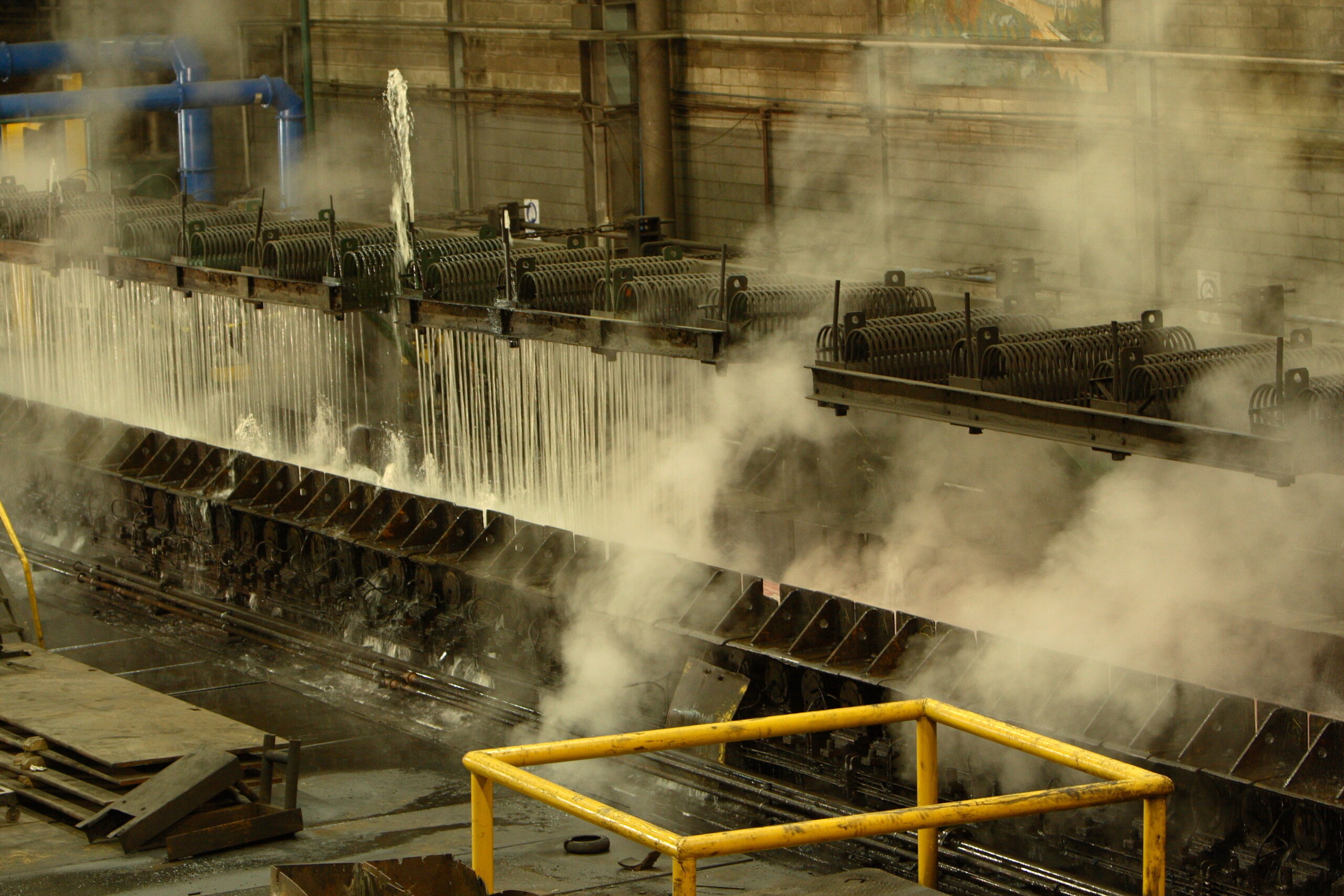
Tags: Down Coiler
Converter/ Inclined hoist: Robust encoders ensure more precision and less downtimes
Home Case Studies Robust encoders ensure more precision and less downtimes The skip-car control mechanism utilised to date included two mechanical, geared cam limit switches that are time consuming to program. Upgrading to meet modern demands required suitable components for measuring actual values that are not only characterized by their high accuracy and functional reliability, but are also easy to program. Hübner Giessen replaced one of the geared cam limit switches with a series FG 4 K incremental encoder and an AMS 4 K type absolute encoder with integrated SSI interface. Converter/ Inclined hoist: Robust encoders ensure more precision and less downtimes Home Case Studies Pilger mill in tube rolling mills – hot and cold pipe detection Pilger mill in tube rolling mills – hot and cold pipe detection Greater functional component reliability Higher converter plant availability More precise measurement signals despite shock and vibration loads Easy and time-saving programming Before: Old skip-car control mechanism with two mechanical geared cam limit switches. Task The skip-car control mechanism utilised to date included two mechanical, geared cam limit switches that are time consuming to program. The mechanical overspeed switch utilized can prove problematical when subjected to shock and vibration loads. Neither of these components exhibits the required precision and as such are not suitable to meet the modern-day requirements of steel mill operations. After: More precise signals because of robust combination of bearing block and heavy duty encoders. The Hübner Giessen solution Upgrading to meet modern demands required suitable components for measuring actual values that are not only characterized by their high accuracy and functional reliability, but are also easy to program. Hübner Giessen replaced one of the geared cam limit switches with a series FG 4 K incremental encoder and an AMS 4 K type absolute encoder with integrated SSI interface. Fitting the devices to a bearing block increases their resistance to shock and vibration loads and compensates the mechanical tolerances of the installed, previous transfer gearbox. The other cam limit switch will also be replaced in a second modernizing step as will the mechanical overspeed switch be replaced by a programmable electronic overspeed switch. Products and Accessories Speed feedback for main drives Heavy duty absolute encoder Heavy duty programmable overspeed switch Case Study Number TP3 Challenge The increasing flexibility of production lines requires a high adaptability of sensors. Continually changing object geometries, different temperatures and very high radiation or surrounding temperatures are no rarity. In a pilger mill those rough conditions can be found, among others in the production of seemless steel pipes. The raw steel blocks, each weighing a few tons are heated up first in a round oven at a temperature of 1300 °C. After descaling of the surface, the steel block is prepunched in a hole press with a strength from a converted 2000 t. In the next sloping rolling mill the growing pipe rotates between two rollers that are positioned at an angle to each other. The punching is widened to the size of the mandrel diameter. Previous solution / Competitor product N/A Solution The sensor that was installed at this application is the HMD OKA 2038.38 G with tube OL 19. The signal of the infrared sensors controls the movement of centering device and abutment. The point of view is restricted by the tube and prevents disturbances by steam in the cooling phase. An optimum adaptation to the operating conditions is given due to the adjustable response temperature. The HMD with self-learning response temperature (Auto-Teach function) is suited to continually changing conditions. The compact sensor with a stainless steel housing can withstand surrounding temperatures of up to 75° C. The use of a cooling jacket raises this up to 200° C. Alternatively sensors with fibre optic cables are available which permit an application at ambient temperatures up to 600° C without cooling. Customer Benefits Maintenance-free High temperature stability Recognition of hot objects at big distances Self adjustment with Auto-Teach or step switch for the response temperature Product Part number OKA 2038.38 G Brand Proxitron Accessories Piros swivel stand HM2 Tube OL 19 Pilot light unit (for alignment) DAK 308 + OL 26 Different cable lengths (e.g. 15 m) Customer Testimonial compared to previous solution or competition Case Studies Other Solutions in Hot Rolling Mills Sample case study title lorem ipsum here Short description of the problem solved, maybe include the client name. READ MORE Sample case study title lorem ipsum here Short description of the problem solved, maybe include the client name. READ MORE Sample case study title lorem ipsum here Short description of the problem solved, maybe include the client name. READ MORE View All
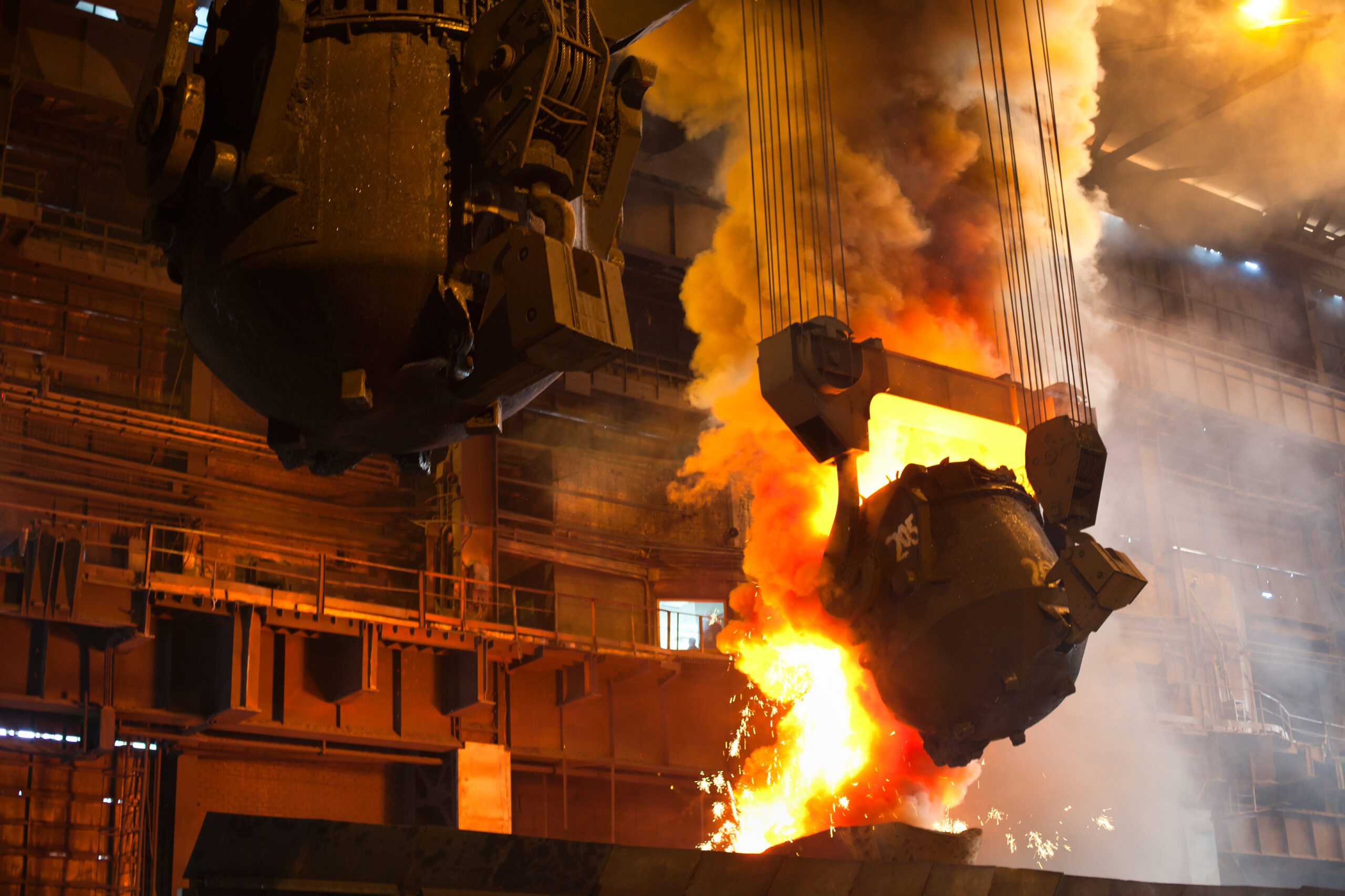
Tags: Crane, material handling
October 7, 2021
Page 4 of 12
